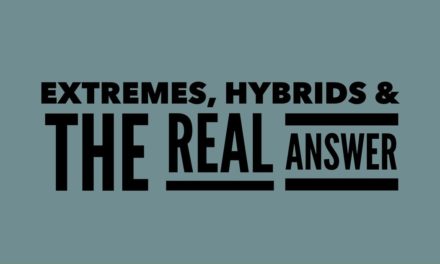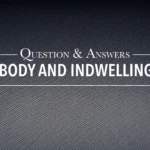If you have not, click here to read part one or part two.
–
In South America there is a spider whose habitat is by water and in water. Somehow it creates a bubble in which it can drop into the water and actually be below the surface while living in the air above. This little creature provides an illustration, at least to some extent, of being in the world, but not of it.
In this series we are considering the precise wording of Jesus in John 17: these are in the world, but they are not of the world. How does this work? Three distinctions of true separation from the world formulate by perusing key passages that address the believer’s relationship with the world. In Part One we discussed transcendence over the world, not isolation from it. In Part Two we addressed transformation by the Spirit, not conformity of the flesh. Now let’s consider a third distinction. True biblical separation is a matter of trust in God, not trust in man.
There is a wrong approach and a right approach.
Fear Approach
The fear approach leads to isolation. It’s based on suspicion not spiritual discernment. The thinking is “Well, we need to stay away from this, because this could lead to that, and that could lead to the other.” Pretty soon you would need to go out of the world (1 Corinthians 5:10).
This isolation approach based on fear might be described as a “monastic approach” to sanctification. Monasteries often are away from the city in hopes of rising above sinfulness which is more easily accessible in cities. But the walls of the monasteries do not change hearts. When Christians opt for a monastic approach to sanctification, inevitably life eventually takes them outside the safety of the walls, and they are vulnerable to a fall.
This fear approach usually takes form as standards-focus (walls-focus) instead of God-focus. This mis-focus leads to flesh-dependence (dependence on the walls) instead of God-dependence. This is trust in man, instead of trust in God.
This claim does not imply that God does not lead individuals to applications in the form of what is called standards. He does. It does clarify that the focus of faith cannot be any other object than Jesus.
When the focus is on externals rather than Jesus, those who follow find their identity in externals rather than Jesus. But when the focus is on Jesus, rather than externals, those who follow find their identity in a Jesus, rather than externals. Externals have their place, but the focus must be Jesus who will lead to appropriate externals. We will clarify more shortly. There is a right approach.
Faith Approach
As the fear approach leads to isolation, the faith approach leads to transcendence and transformation. Faith focuses on the object of faith. Thus, the faith approach focuses on Jesus. Instead of standards-focus, there is Jesus-focus. Jesus-focus leads to Jesus-dependence. Looking unto Jesus, the author of faith (Hebrews 12:2). The focus and passion of faith is on relationship with Jesus, not rituals of conformity, even though Jesus leads in the paths of righteousness.
The right approach is not a standards-focus or a no-standards-focus (which is a standards focus in reverse), but rather a focus on Jesus—the standard Himself! Jesus will then lead individuals to the personalized standards He knows each one needs to protect their relationship with Him. When this is the case, the dependency is on Jesus rather than merely standards. This difference matters, for only Jesus has power to enable.
Jesus, by His Spirit, never leads to sin and never leads to compromise. The Spirit knows what guardrails each believer may need wherever they are on their journey. When the Spirit leads, the surrendered heart follows. It’s okay to have a Spirit-led standard others may not have. The key is being led by the Spirit, thus, the dependence on the Spirit.

John Van Gelderen
Post Author












Most with Standards do it out of a love for Christ so to theorize they do it to be Standard focused if kinda off…
I do remind ourselves to be serious in read and understand the Bible ,in the books of Joel3:1-32 .Ezekiel33:1-last verses